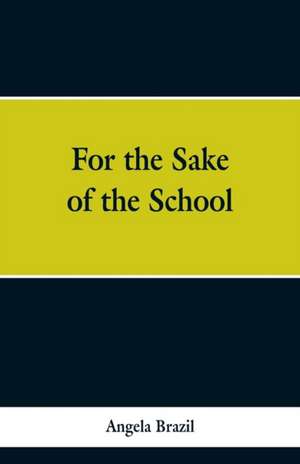For the Sake of the School
Autor Angela Brazilen Limba Engleză Paperback – 12 feb 2019
| Toate formatele și edițiile | Preț | Express |
|---|---|---|
| Paperback (5) | 48.27 lei 3-5 săpt. | |
| CREATESPACE – | 48.27 lei 3-5 săpt. | |
| CREATESPACE – | 87.52 lei 3-5 săpt. | |
| Alpha Editions – 12 feb 2019 | 89.40 lei 6-8 săpt. | |
| 1st World Library – | 89.93 lei 6-8 săpt. | |
| Read & Co. Children's – 22 noi 2017 | 128.91 lei 6-8 săpt. |
Preț: 89.40 lei
Nou
Puncte Express: 134
Preț estimativ în valută:
17.11€ • 18.66$ • 14.42£
17.11€ • 18.66$ • 14.42£
Carte tipărită la comandă
Livrare economică 24 aprilie-08 mai
Preluare comenzi: 021 569.72.76
Specificații
ISBN-13: 9789353298449
ISBN-10: 935329844X
Pagini: 186
Dimensiuni: 140 x 216 x 10 mm
Greutate: 0.24 kg
Editura: Alpha Editions
ISBN-10: 935329844X
Pagini: 186
Dimensiuni: 140 x 216 x 10 mm
Greutate: 0.24 kg
Editura: Alpha Editions
Notă biografică
Angela Brazil (30 November 1868 - 13 March 1947) was one of the first British writers of "modern schoolgirls' stories", written from the characters' point of view and intended primarily as entertainment rather than moral instruction. In the first half of the 20th century she published nearly 50 books of girls' fiction, the vast majority being boarding school stories. She also published numerous short stories in magazines. Her books were commercially successful, widely read by pre-adolescent girls, and influenced them. Though interest in girls' school stories waned after World War II, her books remained popular until the 1960s. They were seen as disruptive and a negative influence on moral standards by some figures in authority during the height of their popularity, and in some cases were banned, or indeed burned, by headmistresses in British girls' schools. While her stories have been much imitated in more recent decades, and many of her motifs and plot elements have since become clichés or the subject of parody, they were innovative when they first appeared. Brazil made a major contribution to changing the nature of fiction for girls. She presented a young female point of view which was active, aware of current issues and independent-minded; she recognised adolescence as a time of transition, and accepted girls as having common interests and concerns which could be shared and acted upon.
